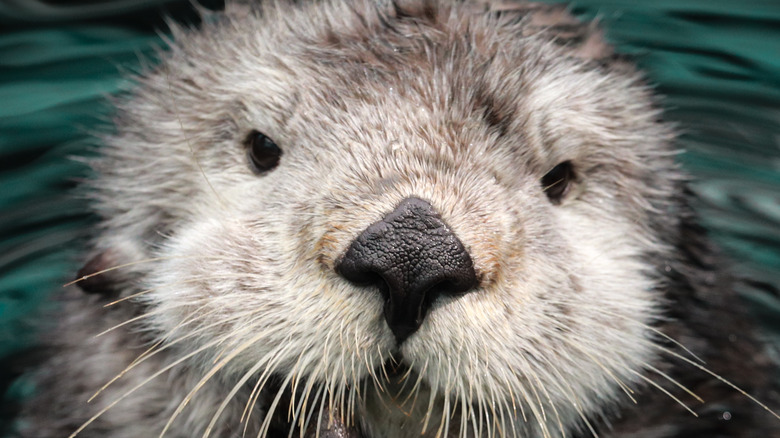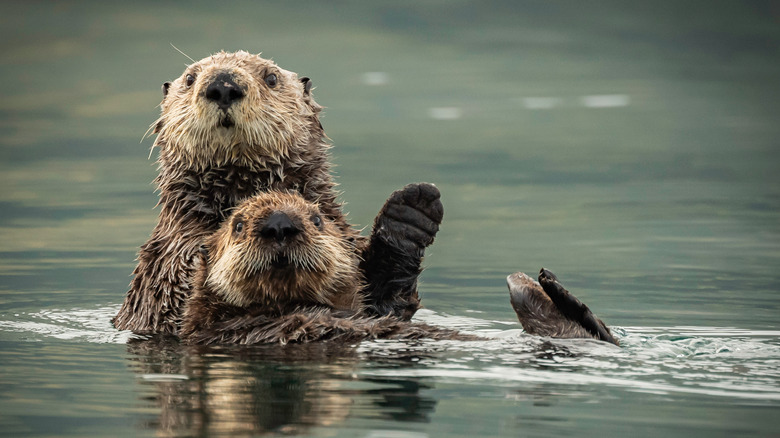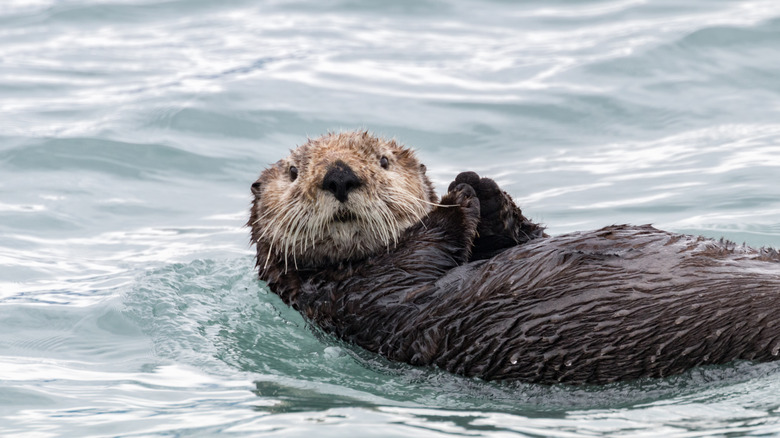Sea Otters Are A Lot More Dangerous Than You Probably Thought
The Australian Institute Of Marine Science states that attacks by sharks cause around 10 deaths each year around the world. While the numbers are negligible — this is about 6.5% of the number of people killed by coconuts falling from trees annually — authorities suggest we take precautions. The Florida Museum's International Shark Attack File offers suggestions for swimmers, such as "wearing shiny jewelry is discouraged because the reflected light resembles the sheen of fish scales."
Great white sharks and other formidable ocean-dwellers can, rarely, be a threat, but they don't deserve their fearsome reputation. That iconic species in particular, per National Geographic, doesn't actively hunt humans at all, but will occasionally confuse them with seals or bite to "investigate" what we are.
Unfair as it may be, sharks have a bad rap. The sea otter has the opposite problem. These furry funsters are often considered adorable and harmless. They are super cute, there's no denying that, but harmless? Absolutely not.
Sea otters have mighty bites
Physically, sea otters aren't the most imposing of creatures. Britannica reports that they're the biggest species of otter, but this isn't necessarily saying very much: They grow to weigh about 90 pounds and measure around 65 inches long.
What's dangerous about them? First, they're intelligent tool-wielders. Britannica goes on to explain that mollusks are a favorite delicacy of sea otters, and they break their way into the shells by splintering them with stones, striking them repeatedly while floating on their backs.
For other crunchy prey, however, their natural equipment will do just fine. Sea otters have very strong teeth relative to their size. The Burke Museum reports that they can enjoy their diet of marine invertebrates, which tend to be tough critters themselves, because they have strong skulls, teeth that are robust, and a bite force of around 80 lbs. Clearly, these are not creatures to take lightly.
Always let dozing sea otters lie
Not only do sea otters pack a lot of power in their small bodies, but experts tell us that the creatures aren't always afraid to use it. As the Huffington Post reported in 2015, in a controversial incident, a clip was posted to the Internet of a person on a boat poking a sea otter as it floated by the vessel on its back. The otter seemed to be unharmed but alarmed, and took off quickly into the ocean.
This incident was dangerous. As Carrie Goertz of the Alaska SeaLife Center told Huffington Post, sea otters can display aggression if they feel threatened. This is reason to be alarmed despite their relatively small size, Goertz explained: "they have sharp teeth and claws; some refer to them as 'chainsaws with fur.'"
As a protected, vulnerable species, they should be left alone to thrive. If you don't, you may pay the price in more ways than one. It's actually illegal to touch a sea otter — it's considered wildlife harassment and could earn you a fine of up to $20,000 as well as up to a year in jail. Messing with these furry chainsaws is also dangerous because, per Sea Otters, they can transmit serious illness to humans: "some important zoonotic organisms that are known to infect sea otters include the single-celled parasite Toxoplasma gondii, the marine Brucella bacteria, and the fungus Coccidioides immitis. C. immitis infection causes the disease 'Valley Fever' in humans."


